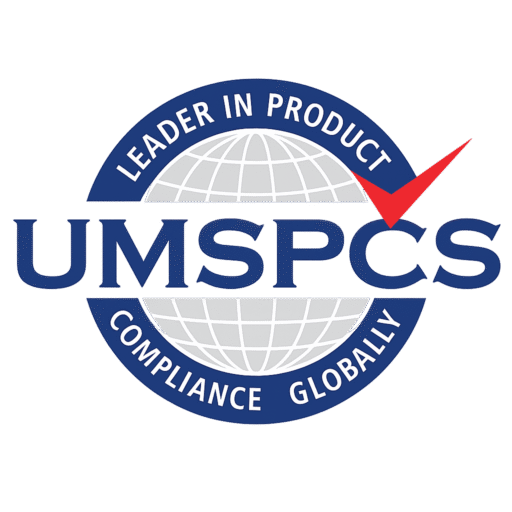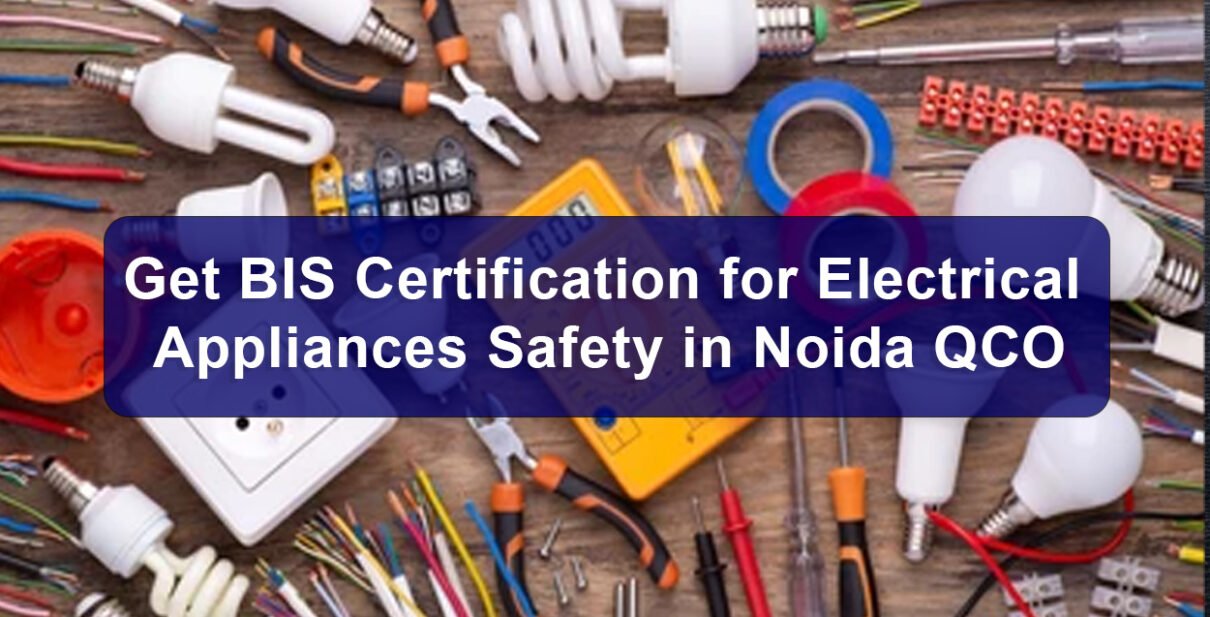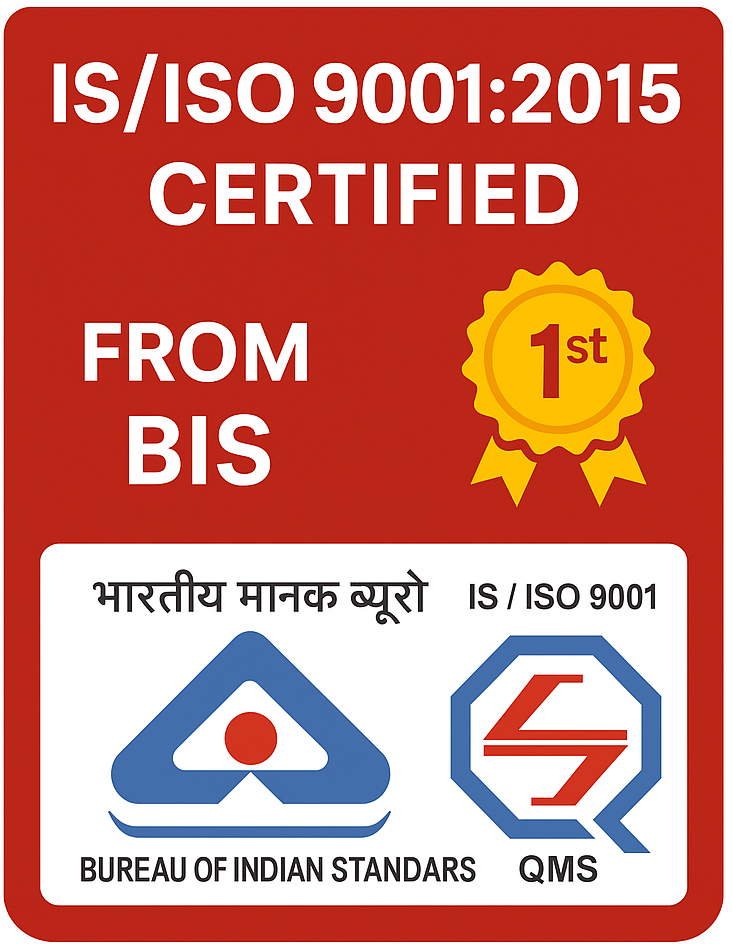Introduction
In every room of our homes, workplaces, and places of business, electrical equipment serve an essential function. Electrical shock, fire, overheating, insulation failure, and short circuits are just some of the risks that come with convenience. Get BIS Certification for Electrical Appliances Safety of Household and Commercial Quality Control Order is a new QCO that the Indian government has issued in response to this, increasing regulatory monitoring.
Numerous electrical equipment utilized in homes, businesses, and other comparable environments are required by this QCO to meet certain Indian Standards and acquire certification from the Bureau of Indian Standards prior to their production, import, sale, or distribution.
The market for electrical equipment is to be standardised and held to a higher standard of safety in order to safeguard customers.
Context and Notification for BIS Certification for Electrical Appliances
- “BIS Certification for Electrical Appliances Safety of Household and Commercial Quality Control Order, 2024” was the legal notice sent to the QCO under S.O. 4098(E), dated 20 September 2024.
- Following this, on May 19, 2025, S.O. 2232(E) clarified the scope, voltage bands, and dates with an amended order named “Safety of Household, Commercial & Similar Electrical Appliances (Quality Control) Order, 2025”.
- An update to BIS’s “What’s New” section has been made, confirming the publication of the Implementation of BIS Certification for Electrical Appliances Safety of Household and Commercial Quality Control Order, 2024.
- Under the legal authority, the QCO is duly published in the Gazette notification (C.G.D.L. E-20092024-257284).
Accordingly, while the year is titled “2024,” the preparation for regulations and their implementation occurs in 2025 and 2026.
Areas Included and Covered
Its scope is expansive, as is the QCO. Within its purview are electrical appliances designed for residential, business, or comparable uses, up to certain voltage limitations:
- The following types of appliances are classified as single-phase: appliances with a rated voltage of 250 V or less appliances with a voltage of up to 480 V (including multi-phase, direct current supplied, and battery-operated models)
- To prevent duplication, however, devices that are already covered by other QCOs are not included here.
The following small and medium electrical appliances are examples of those that fall under the umbrella of “covered appliances”: electric fans, hot plates, mixers, toasters, microwave ovens (within voltage restrictions), and many more.
The upgraded general safety standard for home and similar appliances, for example, is IS 302 (Part 1) : 2024 / IEC 60335-1:2020, and the QCO also updates pertinent Indian Standards.
Scheduling of Implementation and Compliance
The delayed enforcement of this QCO is one of its most important characteristics since it gives producers, importers, and smaller businesses more time to react.
- The QCO is expected to be implemented for general organizations on 19 March, 2026 as the Primary Enforcement Date.
- Big and medium businesses have until March 2026 to comply, whereas small and medium businesses have until 19 June, 2026 to do so.
- Micro Enterprise Deadline: Compliance must be met by 19 September, 2026 for micro enterprises.
- Also, until 23 February 2026, the updated IS 302 (Part 1) standard will be in effect alongside the previous IS 302-1:2008 standard, providing some leeway.
Aiming for a middle ground between regulatory rigor and industry preparedness, these phased dates reflect that. Keep in mind that the government is reportedly considering requests for an extension, so the QCO timeframe might be further pushed out.
Important Duties & Lawful Needs
Stakeholders are required to fulfill the following requirements in order to comply with this QCO:
BIS Certification / License
Anyone making or importing appliances that fall under its purview needs a valid BIS certification / license in order to put the Standard Mark on their products.
Products are required
To undergo testing in compliance with applicable Indian Standard (IS) standards, such as IS 302 (Part 1) 2024 / IEC 60335-1:2020.
Qualifying Chemical Outcomes Not Included
Excluded from this QCO to prevent duplication are appliances that are already covered by other QCOs, such as certain electrical categories.
Marking & Labeling
The BIS Standard Mark and other identifying characteristics are required on all products according to labeling rules.
Market Research & Surveillance
You need to be always vigilant, as BIS or other related officials can conduct an official inspection of your factory anytime. If you violate it, it may cause you fines, or your license could also be revoked.
Alignment During Transition
Prior to enforcement, manufacturers have the option to make files under either the previous standard, IS 302:2008, or the updated standard, IS 302:2024.
Effects on Businesses and Other Interest Groups
Ensuring Customer Trust & Safety – From the perspective of the customer, this QCO lowers the hazards of fire, shock, and malfunction by making sure that all commercially available electrical equipment fulfill minimal safety standards. This enhances confidence in brands from India.
Scheme to Encourage Domestic Manufactures– The rule motivates producers to enhance quality systems, testing infrastructure investments, and manufacturing processes by mandating certification.
Preventing Low-Quality Imports – The QCO prevents low-quality imports that disregard safety standards by imposing regulations. The Indian market will only accept items that have been approved by the BIS.
The Costs and Difficulties of Compliance – Compliance expenses, such as testing fees, lab turnaround times, infrastructure changes, and paperwork, can be a burden for smaller firms.
Imports and the Supply Chain – In order to import lawfully, importers must verify that their overseas suppliers meet BIS requirements. The focus of contractual duties will change to ensure compliance at the upstream level.
Guide to Compliance: Preparation Steps
- Analyzing Gaps and Mapping Products – Compare the extent of your product lines to that of the QCO. Determine which models (based on voltage and use case) are encompassed by it.
- Acquire Copies of Relevant Safety IS Standards – Compare design to specification using copies of applicable safety IS standards.
- Get Accredited Labs Involved Right Away – To detect compliance concerns early, start by partnering with BIS-recognized test laboratories and start testing samples.
- Submit an application for a BIS license or certification – To apply for a product license and Standard Mark permission, you must use Scheme I (ISI or an equivalent).
- Systems for Factory Readiness and Quality – Make that your paperwork, calibration, QA methods, production lines, and traceability all pass BIS audits.
- Design for Labeling and Marking – Label products in accordance with regulations by include the Standard Mark, model number, rating, and any other pertinent information.
- Preparation for Market Surveillance – To protect yourself from inspections, keep records of all your tests, certificates, complaints, and post-market checks.
- Record Regulatory Changes – Note any changes to the QCO, such as postponements, clarifications, or circulars from BIS or DPIIT.
- Initial Small / Micro Businesses – The longer compliance deadlines (up until September 2026) should be considered when making plans for small and micro enterprises.
- Communicating with Stakeholders – Keep distributors, importers, and suppliers informed of any changes to QCO. Incorporate provisions for compliance into agreements.
Frequently Asked Questions (FAQs):-
Question 1: What exactly is this QCO all about?
All commercial, residential, and similar electrical equipment with a voltage rating above a particular threshold are required by this QCO to be BIS-certified and to meet specific safety criteria set by the Indian government before they may be imported or sold.
Question 2: When will it be effective?
For big and medium firms, the QCO is generally scheduled to be implemented on 19 March 2026. There is a deadline of 19 June 2026 for small businesses and 19 September 2026 for micro businesses
Question 3: What is the variety of equipment that are protected under this?
Various products like fans, heaters, mixers, water heaters, etc are protected. These have voltages of 250 V or 480 V and are mainly used in homes, businesses, or similar places.
Question 4: Are certain things that don’t apply?
Yes. Items that are currently controlled by other QCOs are not included. Also, certain imports, such as those for research and development or in tiny quantities, may be excluded from government regulations.
Question 5: To what criteria do items need to adhere?
For general safety criteria of home and similar equipment, the new safety standard is IS 302 (Part 1):2024 / IEC 60335-1:2020.
Question 6: Will the previously held IS standards still be applied for manufacturers?
Yes, the original IS 302:2008 and the updated IS 302:2024 can both be utilized by the manufacturers. The date for this is uptil 23 February 2026.
Question 7: What can BIS do if the product is not passing market surveillance?
According to the BIS act, they can allow for suspensions, removal of license, or even impose legal penalties.
Question 8: Must all imports and exports be certified?
The Bureau of Indian Standards (BIS) certification is required for all covered imported appliances. Exports to the Indian market are also considered to be part of this certification.
Question 9: Is it possible to add more models at a later time?
Indeed, producers have the option to request the inclusion of other models under the same license, provided that testing confirms conformance.
Question 10: What is it specifically that makes this QCO so important?
Essentially it helps to remove dangerous and harmful electrical products so that they are unable to enter the Indian market. It also increases the dependability on the product and improves the safety for the customers.
Final Thoughts
A significant regulatory milestone for the electrical appliance ecosystem in India has been reached with the BIS Certification for Electrical Appliances Safety of Household and Commercial Quality Control Order, 2024.
Importers, merchants, and manufacturers will all be compelled to increase safety, document rigor, and quality control due to the government’s apparent determination to enforce compliance through this QCO.
Phased timetables, concurrent standards, and regulatory clarity provide breathing room, however, the compliance work is non-trivial, especially for small companies.
Success is probable for those that take the initiative to map their product ranges, test early, modernize their facilities, and collaborate with compliance specialists. Market exclusion or regulatory penalties might befall tardy adopters.


